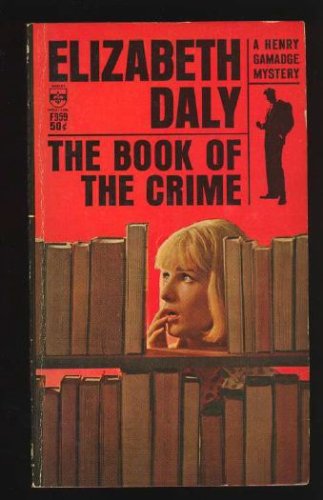 This is the third novel in the first of the Detective Book Club collections I’ve been working on recently, and it’s the one that has the most American flavor to it, although its setting is an island off the Massachusetts coast that does not have electricity, so everyone’s still lighting oil lamps.
This is the third novel in the first of the Detective Book Club collections I’ve been working on recently, and it’s the one that has the most American flavor to it, although its setting is an island off the Massachusetts coast that does not have electricity, so everyone’s still lighting oil lamps.
A New York detective, released from the hospital, is sent to a bucolic island for a rest. As he arrives at the boarding house where he will stay, the residents discover a dead man swinging from the rafters in the attic. It looks to be a suicide, but the big city detective proves it a murder. Other residents begin having suspicious accidents, and the detective must lead the sheriff in investigating them. Also, he kinda sorta tries to woo another visitor, a big city resident who comes to the island to paint. He does so clumsily, with the wooing scenes reading a bit like high school, not like what grown people do. Of course, since this book was written in the 50s, the main characters are in their 20s.
As I indicated, the pacing is better and the sensibilities are more modern American, but the book does seem to linger in spots, particularly in the denouement.
If the other two books in the volume had been this good, relatively, I’d almost be eager to jump into another one of the volumes. Many of them feature Perry Mason or Inspector Maigret novels. However, I’ll probably look at something else for a while. And a bit of a note on the binding of these: I don’t know if my body chemistry has changed recently or what, but just holding the book to read it stained the cover a bit, which is unlike other Walter J. Black books I have read. Perhaps it was just a strange circumstance of this volume, but most of the ones I bought, I bought at the same book fair presumably had the same previous owner, so I might need to invest in some reading gloves to keep these relatively pristine.



 In this book, Mack Bolan goes to New Orleans to blow the mafia up there during Mardi Gras and finds that his two cohorts from
In this book, Mack Bolan goes to New Orleans to blow the mafia up there during Mardi Gras and finds that his two cohorts from  This book is one of the last in a series by Elizabeth Daly, whom Wikipedia claims Agatha Christie called her favorite American author or something. Like
This book is one of the last in a series by Elizabeth Daly, whom Wikipedia claims Agatha Christie called her favorite American author or something. Like 
